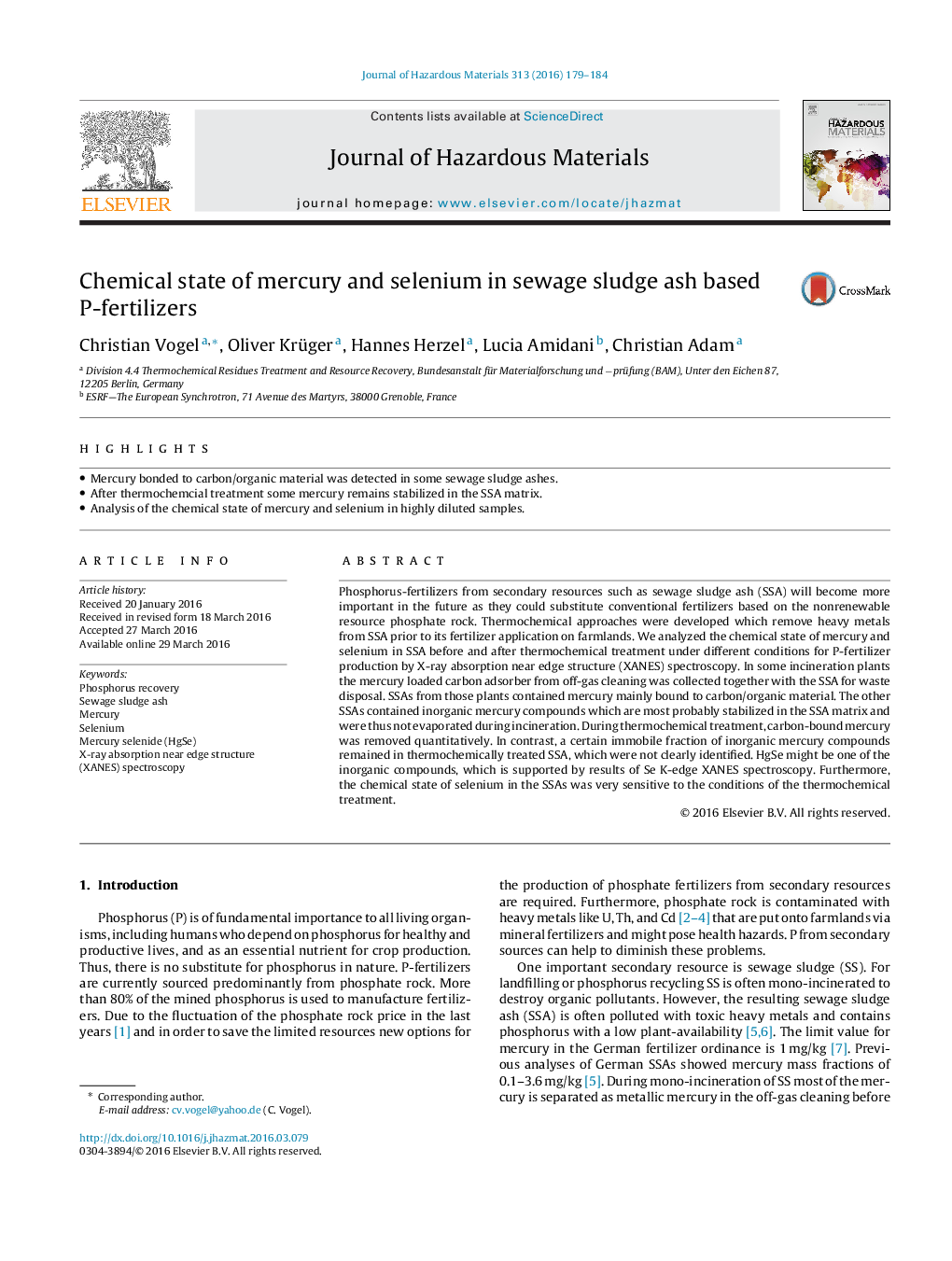| Article ID | Journal | Published Year | Pages | File Type |
|---|---|---|---|---|
| 575259 | Journal of Hazardous Materials | 2016 | 6 Pages |
Abstract
Phosphorus-fertilizers from secondary resources such as sewage sludge ash (SSA) will become more important in the future as they could substitute conventional fertilizers based on the nonrenewable resource phosphate rock. Thermochemical approaches were developed which remove heavy metals from SSA prior to its fertilizer application on farmlands. We analyzed the chemical state of mercury and selenium in SSA before and after thermochemical treatment under different conditions for P-fertilizer production by X-ray absorption near edge structure (XANES) spectroscopy. In some incineration plants the mercury loaded carbon adsorber from off-gas cleaning was collected together with the SSA for waste disposal. SSAs from those plants contained mercury mainly bound to carbon/organic material. The other SSAs contained inorganic mercury compounds which are most probably stabilized in the SSA matrix and were thus not evaporated during incineration. During thermochemical treatment, carbon-bound mercury was removed quantitatively. In contrast, a certain immobile fraction of inorganic mercury compounds remained in thermochemically treated SSA, which were not clearly identified. HgSe might be one of the inorganic compounds, which is supported by results of Se K-edge XANES spectroscopy. Furthermore, the chemical state of selenium in the SSAs was very sensitive to the conditions of the thermochemical treatment.
Keywords
Related Topics
Physical Sciences and Engineering
Chemical Engineering
Chemical Health and Safety
Authors
Christian Vogel, Oliver Krüger, Hannes Herzel, Lucia Amidani, Christian Adam,
